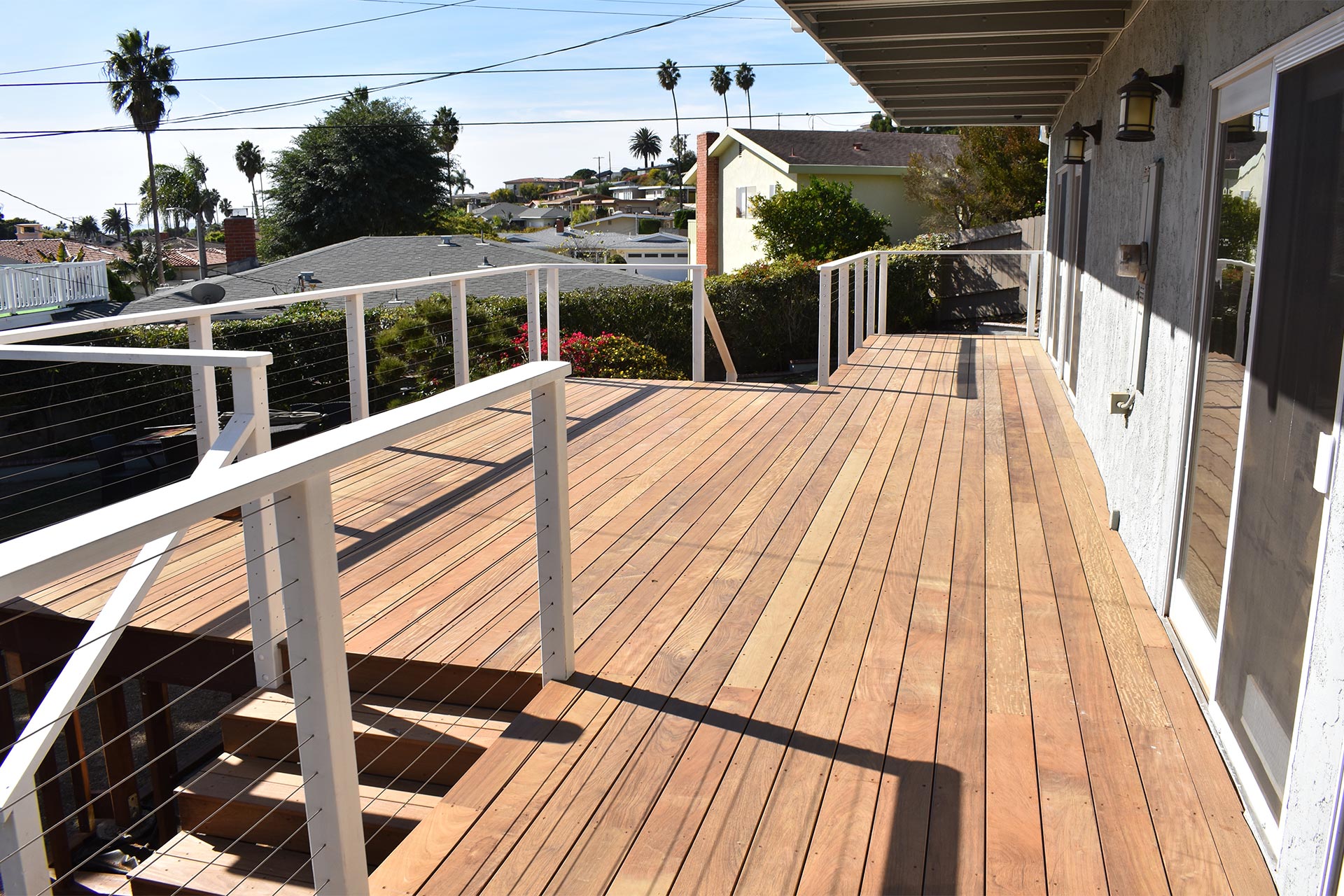Choosing deck materials is a very personal matter. Hence, there’s no “best material” that’s best for all clients. Each material has it’s unique properties. It’s own set of trade-offs. By analogy, a new Korean compact SUV is the best choice for one driver, a temperamental restored 1946 British sports car for another. After all, people have different tastes. Different passions, different budgets, and different values. Budget constraints are paramount for some people. Others have different priorities and care less about the dollars.
Deck materials fall into two categories: wood and composite. Moreover, there are numerous choices within each category. This overview offers a sense of the features and trade-offs. The devil, as they say, is in the details.
WOOD
Redwood’s been a popular choice for Southern California deck projects for many years. Thus, its look and feel are truly classic. Redwood’s rustic color is undeniably a great addition to our region’s landscapes. It’s environmentally friendly, too. In meeting the Forest Stewardship Council’s standards, redwood production takes more carbon out of the environment than it releases. Composite production, in contrast, is 10 times as energy-intensive and is a net emitter of carbon. Redwood is much more easily recycled, too, than are composites.
On the other hand, redwood decks require more maintenance. The price range is $5 to $35 per square foot for redwood decking, depending on the grade. Better grades such as clean heartwood cost more up front. However, they’re more durable and need less maintenance. Perhaps surprisingly, some people like the lower grades for aesthetic reasons. More knots. A look that’s rustic and natural. The trade-off is less strength and durability. Hence, more maintenance.
Redwood’s not the only wood we use as deck builders. We’ve got heavy experience with Ipe, Golden Teak, Tigerwood, Mangaris, and Cumaru woods, too. The looks, costs, and features vary, of course. Did you know Ipe releases a natural insect repellent as it ages? Or that Mangaris releases a stain when it gets wet enough? All of these woods are fantastic, each in its own way. There are great choices for every homeowner and project.
COMPOSITES
Wood’s not right for everybody, though. Composites are artificial materials blending plastics and (recycled) wood chips. They’re usually made with simulated wood grain. A nice feature of composite materials is the variety of wood and earth tones they’re available in.
The main draw of composite deck materials, of course, is low maintenance. They’re more durable than wood. And, of course, don’t ever rot. Annual scrubbing (no dangerous chemicals needed) keeps mold away. That’s about all the care they need. The price of carefree ownership is higher up-front costs. We’re certified in Timbertech, Trex, and Azek composites. Warranties range from 25 years to lifetime.
CHOOSING DECK MATERIALS
There are a lot of things to consider besides looks when choosing deck materials. Our duty is to present clients with options. As experienced deck builders we know, of course, what the features of each material option are. Initial costs, upkeep expenses, durability. We make full disclosure. We inform clients’ decisions, we don’t make them. Clients know what they want. We provide knowledge and experience to help clients focus their preferences and make the choices that fit them best.
MG Construction & Decks offers several interior and exterior remodeling services in Los Angeles California. There is no project too small or too large. However, the majority of our focus has been focused on:

